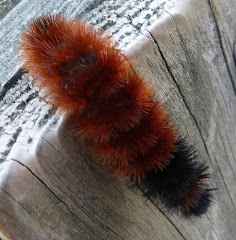How Big is Your Shadow?
Well it’s Groundhog Day again, that day of the year when we all wait around for one of nature’s lowliest creatures to tell us what our weather is going to be. Most of the country recognizes Punxsutawney Phil as the chosen prognosticator, and for the record, he is reported to have seen his shadow today. But here in West Virginia, we rely on good old “French Creek Freddy” a renown resident of the French Creek Game Farm. Now Freddy’s “handlers” have been very assiduous about keeping their scientific records about his prognosticating ability. As such they have offered the scientific opinion that he is “usually” correct. As of this moment I have not heard about his report for the year.
However, based upon our situation here, today, I would say that no self-respecting groundhog in our area would even deign to leave the comfort of his hibernation just to offer us his opinion on the weather. No, I suspect this year, as most years, any groundhog in our area will stay buried within his sleep and wound not even consider coming out until the middle of March, or later. And when he does come out, it will be spring.

Concluding Scientific Postscript: Those of you who are avid followers of this site (all 2 or 3 of you) may be wondering how my previous column about the weather is holding. If you will remember, I had offered my “Wooly Worm Forecast” regarding the winter weather. If you will recall, his prediction said we would have a mild winter after a rough start. Now I ask you to remember, my prognosticator lived in eastern Greenbrier County WV, and while we in the Southwestern portion of West Virginia (and Kentucky) have just been through 2 terrible weeks of snow, ice, rain, cold temperatures etc., in Greenbrier County, for the same period all they got was some rain. So, as far as MY Wooly Worm is concerned, his prediction is holding. Now as for the other reports I had from Wooly Worms in the other parts of West Virginia, well, let’s just say their advocates may be following the lead of French Creek Freddy and maintaining that they are “usually” correct (scientifically speaking).







No comments:
Post a Comment